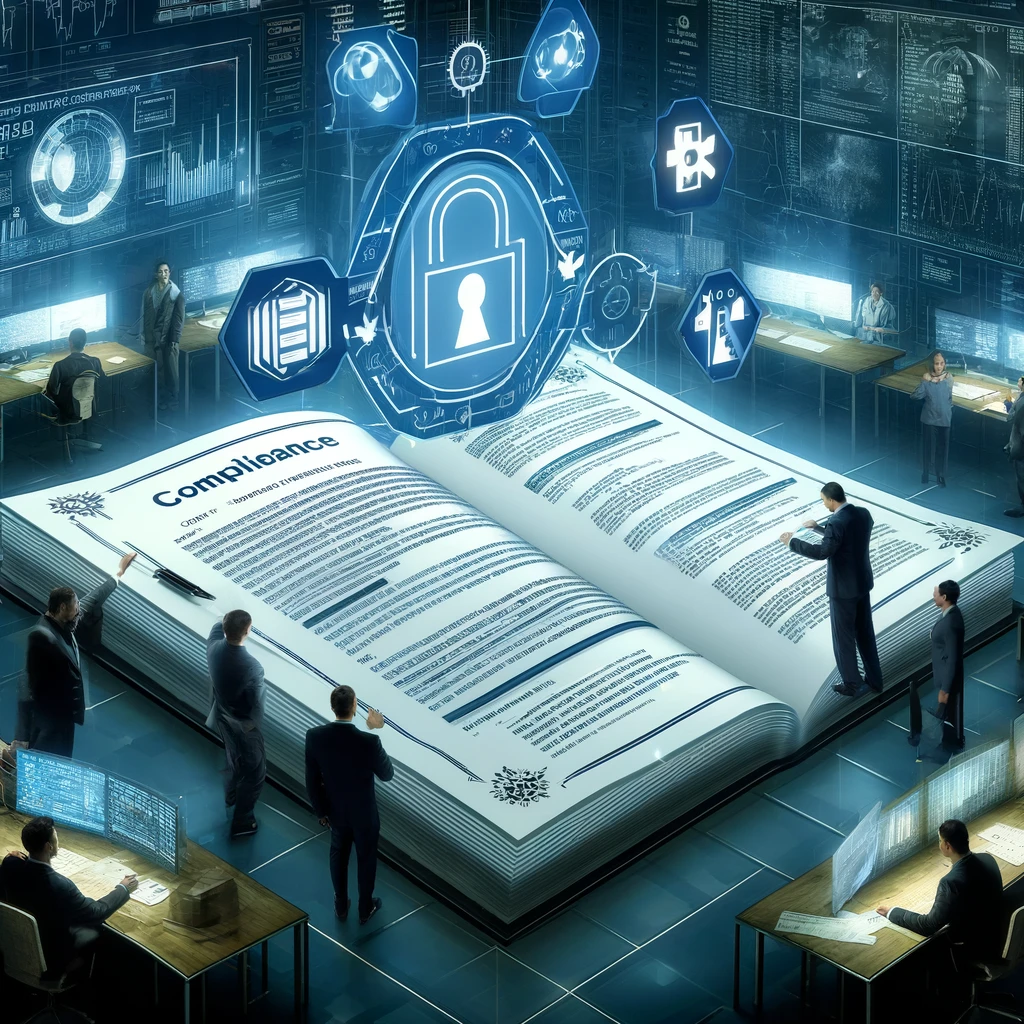
In today’s digital landscape, organizations face a myriad of regulatory compliance requirements aimed at protecting the privacy and security of sensitive data. With the increasing volume and sophistication of cyber threats, compliance with these regulations has become more critical than ever. Among the most prominent regulatory frameworks are the General Data Protection Regulation (GDPR), the California Consumer Privacy Act (CCPA), and other regional and industry-specific regulations. In this blog post, we’ll explore the complexities of navigating compliance requirements in cybersecurity and discuss strategies for ensuring adherence to GDPR, CCPA, and other relevant regulations.
Understanding GDPR and CCPA
- General Data Protection Regulation (GDPR): Enforced by the European Union (EU), GDPR aims to protect the personal data and privacy of EU citizens by regulating the collection, processing, and storage of personal data. GDPR imposes stringent requirements on organizations, including obtaining explicit consent for data processing, implementing robust data protection measures, and notifying authorities of data breaches within 72 hours.
- California Consumer Privacy Act (CCPA): Enacted in California, CCPA grants consumers certain rights over their personal information and imposes obligations on businesses that collect, process, or sell consumer data. CCPA provides consumers with the right to know what personal information is collected about them, the right to opt-out of the sale of their personal information, and the right to request deletion of their personal information.
Navigating Compliance Challenges
Navigating compliance requirements in cybersecurity presents several challenges for organizations, including:
- Complexity and Scope: Compliance with regulations such as GDPR and CCPA requires organizations to navigate complex legal frameworks and understand their obligations regarding data protection, privacy, and security. The broad scope of these regulations and their extraterritorial applicability further complicates compliance efforts, particularly for multinational organizations.
- Data Governance and Management: Compliance with GDPR and CCPA necessitates robust data governance and management practices to ensure the lawful and transparent collection, processing, and storage of personal data. Organizations must establish comprehensive data governance frameworks, including data classification, data mapping, and data retention policies, to meet regulatory requirements effectively.
- Cybersecurity Measures: Compliance with GDPR, CCPA, and other regulations requires organizations to implement robust cybersecurity measures to protect personal data from unauthorized access, disclosure, and misuse. This includes deploying encryption, access controls, multi-factor authentication, and other security controls to safeguard sensitive information and mitigate the risk of data breaches.
- Third-Party Compliance: Organizations must ensure compliance not only within their own operations but also throughout their supply chain and ecosystem of third-party vendors and partners. This involves conducting due diligence on third-party vendors, establishing contractual agreements, and implementing controls to ensure that vendors adhere to applicable data protection and security requirements.
Strategies for Ensuring Compliance
- Conduct a Compliance Assessment: Start by conducting a comprehensive assessment of your organization’s compliance posture, including an analysis of applicable regulations, data processing activities, and potential areas of non-compliance. Identify gaps and prioritize remediation efforts based on the level of risk and impact on data protection and privacy.
- Implement Data Protection Measures: Implement data protection measures, such as encryption, access controls, data minimization, and pseudonymization, to safeguard personal data and mitigate the risk of unauthorized access or disclosure. Ensure that data protection measures align with the requirements of GDPR, CCPA, and other relevant regulations.
- Establish Data Subject Rights Processes: Develop and implement processes for managing data subject rights, including responding to data access requests, deletion requests, and opt-out requests in compliance with GDPR, CCPA, and other regulatory requirements. Provide clear procedures for handling data subject inquiries and requests within the mandated timeframes.
- Provide Employee Training: Educate employees about the requirements of GDPR, CCPA, and other relevant regulations, including their roles and responsibilities in ensuring compliance with data protection and privacy requirements. Provide training on data handling practices, security awareness, and incident response procedures to empower employees to protect personal data effectively.
- Monitor and Audit Compliance: Establish monitoring and auditing mechanisms to track compliance with GDPR, CCPA, and other regulatory requirements. Conduct regular assessments, audits, and reviews of data processing activities, security controls, and third-party relationships to ensure ongoing compliance and identify areas for improvement.
Navigating compliance requirements in cybersecurity presents significant challenges for organizations, particularly in the face of evolving regulatory frameworks such as GDPR, CCPA, and other regional and industry-specific regulations. By understanding the requirements of these regulations, implementing robust data protection measures, and establishing effective governance and oversight processes, organizations can ensure compliance with data protection and privacy requirements and mitigate the risk of non-compliance. With a proactive approach to compliance management and a commitment to safeguarding personal data, organizations can navigate the complexities of regulatory compliance in cybersecurity and build trust with customers, partners, and stakeholders in today’s digital age.

Penetra Cybersecurity is at the forefront of defending the digital frontier, providing cutting-edge solutions to protect businesses and organizations from the ever-evolving threats of the cyber world. Established with a mission to create a safer internet for everyone, Penetra leverages a blend of advanced technology, expert knowledge, and proactive strategies to stay ahead of cybercriminals.
Ready to take the next step towards a more secure future? Schedule a consultation with us today and discover how we can help protect what matters most to you. Don’t wait until it’s too late—with Penetra Cybersecurity, your business isn’t just secure; it’s imPenetrable.




